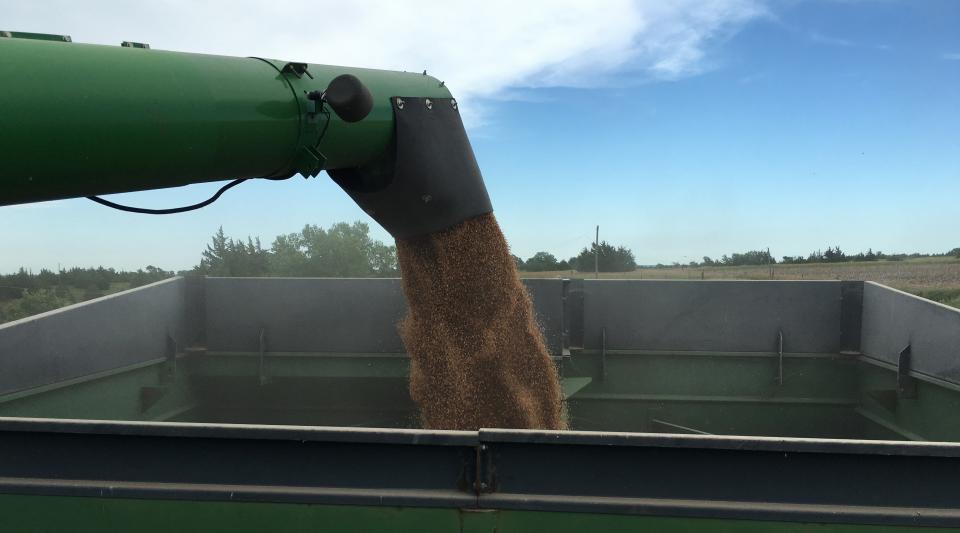
Nebraska 2016 Wheat – High Yields, Low Protein
Nebraska winter wheat production for 2016, as estimated by the U.S. Department of Agriculture’s National Agricultural Statistics Service, is estimated at 63.6 million bushels, an increase of 38% over 2015. The estimated average yield of 53 bushels per acre would be a Nebraska record.
Wheat producers did a much better job in 2016 applying fungicides to protect their crop from stripe rust that moved into the area. Much of the dryland wheat in western Nebraska was heavily infested with stripe rust in 2015, as few producers applied any fungicide. Because of that negative experience, the majority of producers were proactive and applied fungicides to protect their wheat in 2016.
This year many wheat producers were surprised when they delivered their wheat to the elevator and learned their crop had below-average protein levels. Producers with protein levels below the benchmark set by the elevator were docked increasing amounts as the protein level dropped. This was especially difficult this year as margins are already tight for nearly all producers.

High yields were needed for producers to be profitable this year, given current low market prices. However, low prices also put pressure on producers to lower their input costs. For dryland winter wheat producers, herbicides and fertilizers are the primary inputs that can easily be reduced. Unfortunately, reducing or eliminating nitrogen applications to winter wheat will typically result in low protein when yields are high.
So what influences the protein in wheat? One factor is genetic differences among wheat varieties. However, these differences are usually minor and are not the primary driver of protein levels. The biggest influence is the environment where the wheat is grown.
These environmental factors include excess rainfall, growing temperature, and soil fertility.
Because of the abundant precipitation this winter and spring, nitrogen in the soil was likely moved deeper into the soil profile while the roots from the wheat plants grew laterally to access the abundant moisture near the surface. This moved nitrogen out of the root zone, reducing nitrogen uptake.
The high level of soil moisture and favorable growing conditions increased the tillering and yield of the wheat. As wheat yield increases, the requirement for nitrogen increases. Conversely, under heat and drought stress, yield decreases, as well as the need for nitrogen.
Wheat protein develops as the plant converts nitrogen from the soil into amino acids, the building blocks of protein. In order to increase protein levels in wheat, nitrogen must be properly managed in the soil and be available for plant uptake.
Applying nitrogen too early can result in excessive wheat growth and lodging. The nitrogen will also be vulnerable to leaching if heavy rains occur. Typically, dryland wheat has sufficient nitrogen in the soil because yields are typically low.
To properly manage soil nitrogen, apply nitrogen fertilizer after tillers have formed. At this growth stage, potential wheat yield can be estimated and used to determine a nitrogen application rate based on a recent soil test. Applying nitrogen at that time also reduces the chance of nitrogen leaching. As growing conditions change, yield goals need to be updated and evaluated. Have a realistic yield goal and apply nitrogen to meet that goal.
Other nutrients should be evaluated when making fertility plans as well. Sulfur is a component in grain protein production and can limit protein levels if not available to the plant in adequate levels. Phosphorus helps with root development, tillering, plant vigor, and winter hardiness, which all contribute to yield.
By actively monitoring the environment the wheat is growing in, estimating the expected wheat yield, and using recent soil samples, it’s possible to attain respectable protein levels.
Online Master of Science in Agronomy
With a focus on industry applications and research, the online program is designed with maximum flexibility for today's working professionals.
